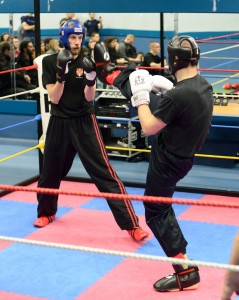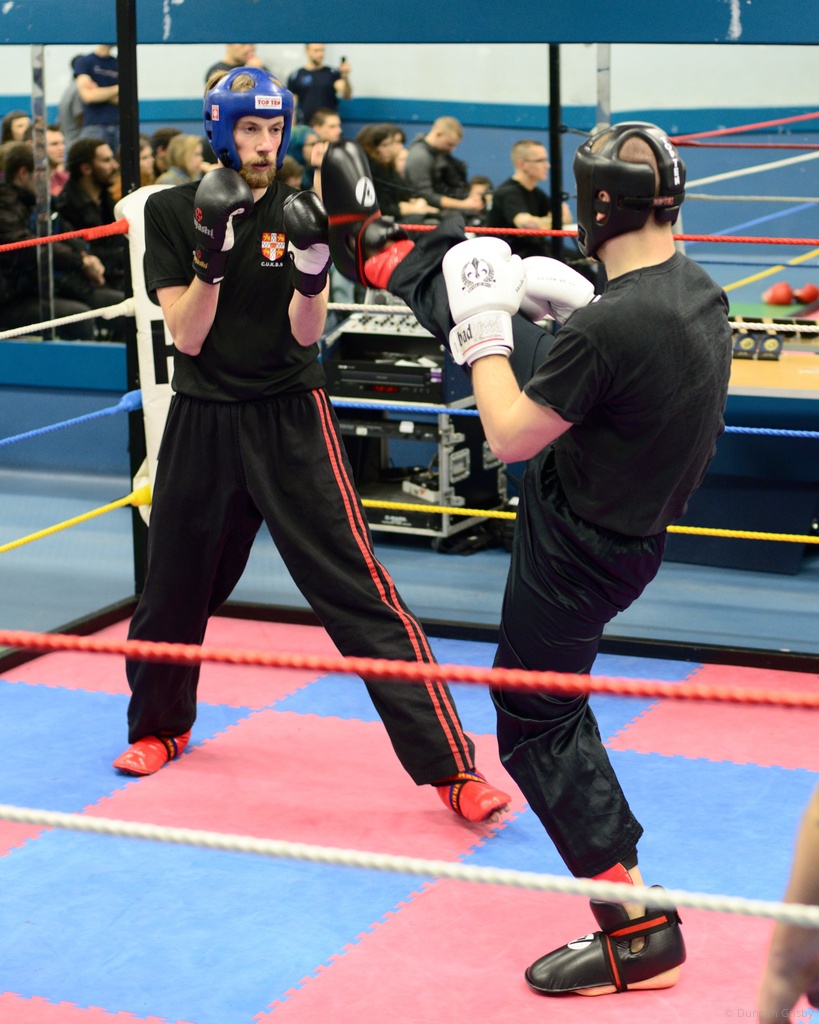
Have you ever heard a sentence like: “this guy fights like a karateka or like a Thai Boxer”? There are indeed typical techniques that characterise various fighting styles. However, while different martial arts styles or even individual schools promote or enhance the use of certain techniques it is more often the case that rules will have the strongest influence on fighting styles; this post analyse how and why this is happening.
Fighting rules affect two key aspect of a fight: what punches, kicks or other strikes are allowed and what area of the body can be hit with these strikes. A typical and very obvious example comes from American Kickboxing that I have been practicing for over 30 years and teaching for more than 20. When fighting full contact or light continuous style, assuming no kicks to the legs are allowed, fighters tend to adopt a front stance with their weight on the front leg that allows easy use of punches from both arms in a very similar fashion to boxing. Adopting a front stance enables kicks with the rear leg to be delivered quite naturally, usually as the natural final part of powerful combinations of punches. Kicks with the front leg can be delivered by quickly switching into cat or side stance. On the other side of the spectrum when fighting according to semi contact rules (also called point fighting) the importance of delivering super fast kicks is paramount, together with a reduced need of complicated punching combinations; single punches often rule. Equally important in semi contact is the need of offering the smallest possible scoring area to the opponent because every touch scores; for this reason most of the semi contact fights see fighters adopting a side stance and same apply to Tae Kwon Do as they hardly ever punch. Shotokan or Wado Ryu Karate fighters will usually fight in front stance with low guard in front of their chest because they don’t use many punches in combination; Kyokushin Kaikan Karate relies on the fact that no strikes will hit face or head.
Thai Boxers face a completely different reality due rules allowing strikes to any part of their body including to kicks to the legs. If Thai Boxers relied on the same front stance that we use for American Kickboxing they would find themselves in lots of troubles as their front legs would become easy targets for strong kicks. That’s why they adopt a stance that keeps their weight heavily shifted backward. Boxers naturally know that nothing but punches will come their way while fighting therefore they can swing and bob their head quite low and wide around their opponent’s punches. Some of these positions would attract troubles if performed while kicks or knee strikes are allowed. Final example is how MMA rules, allowing grabs and grappling, condition their stand up fight. Most MMA fighters are great boxers and kickboxers but they simply cannot exploit their full potential as strikers because of the strong risk of their limbs to be grabbed and them being thrown on the floor for the grappling that will follow.
I have been experiencing for years how rules affect one’s fighting style when I welcome new members to my kickboxing club and some of them join after years of experience in various other styles like Karate, Tae Kwon Do, Thai Boxing and Kung Fu. At the beginning they all try to keep their style and use techniques and stances they were used to; as their experience evolves their whole style also mutates and they become more and more like the other members of the club. Although we teach our techniques and combinations according to our style there is no implicit or explicit suggestions that people should give up what they learnt, as long as they are fighting respecting our rules; however fighting according to our rules progressively inspires them to adopt the techniques and combinations we teach because they fit very well with such rules.


I agree: different rules involves different attitude, gesture and position in front of the opponent. Foe example, I am a Sanda fighter. In the style I practice I can’t use a classic boxing guard, because of the kicks and the takedowns